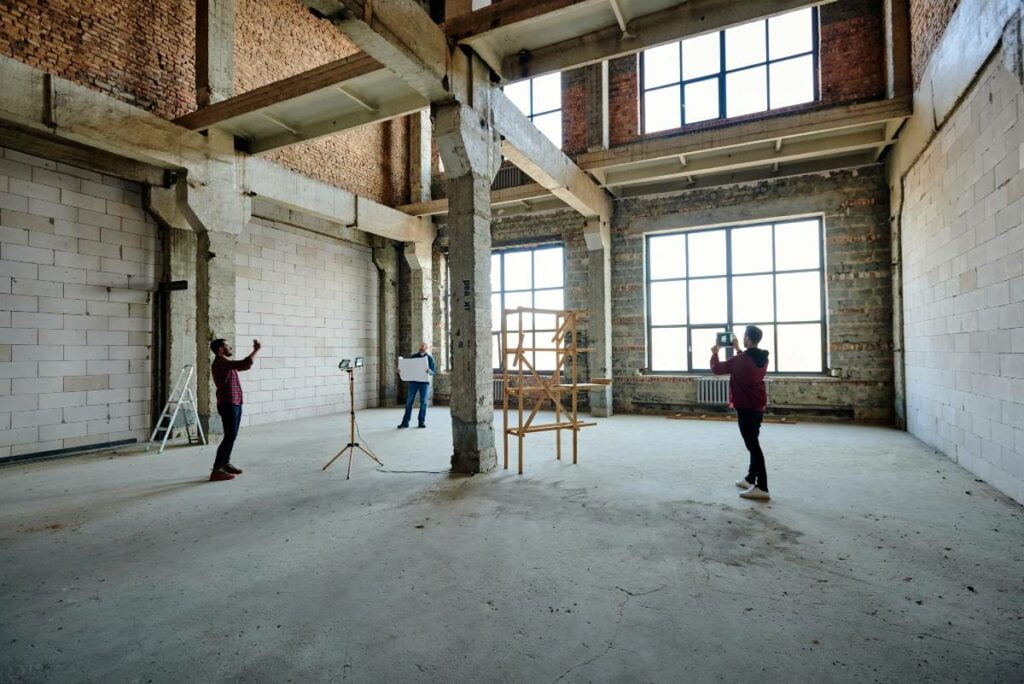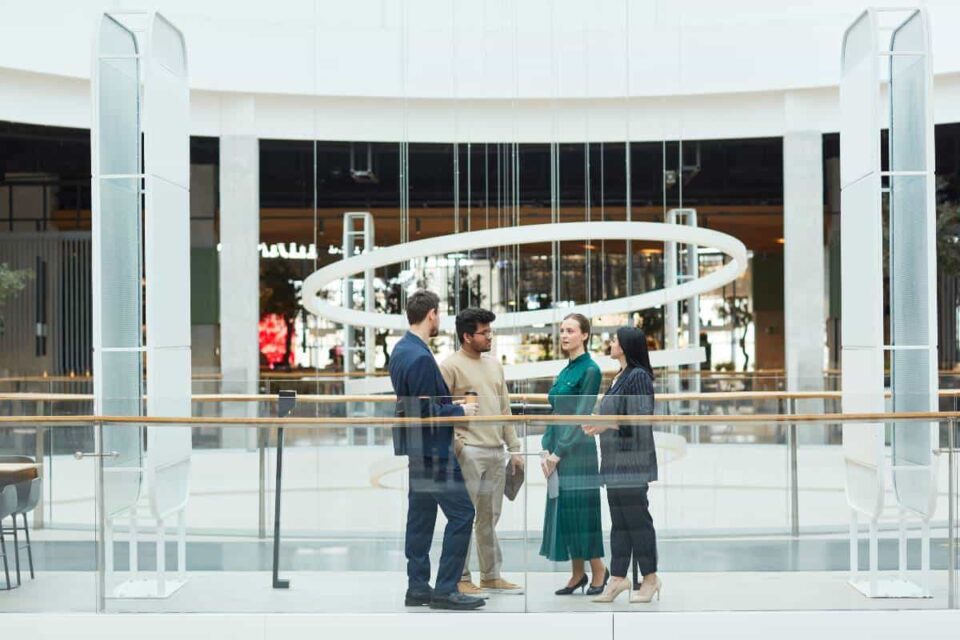As business owners and landlords, I know you pour your dreams into your commercial properties. You envision your space energizing your community and enabling your ventures to thrive for years to come. However, even well-intended real estate plans sometimes lose momentum over time, leaving you with an underutilized asset not reaching its potential. But take heart – there are often creative win-win solutions to breathe new life into outdated buildings. Through a sustainable practice called adaptive reuse, we can collaboratively reimagine your property to deliver higher value and better fulfill your original community-building vision.
Key Takeaways
- Adaptive reuse refers to repurposing existing buildings for new uses, which provides major environmental, economic, and social benefits.
- Key factors to consider for successful projects include site selection, zoning regulations, building code compliance, and accessibility upgrades.
- Top benefits include reducing embodied carbon, enabling sustainable innovation, preserving heritage value, and generating strong investment returns.
Table of Contents
The Growth of Adaptive Reuse in Commercial Real Estate
Adaptive reuse has seen tremendous growth recently as developers and CRE investors increasingly focus on strategies that balance profit with environmental sustainability.
Get this – the number of building reuse projects currently happening just reached a new all-time high! According to a fresh report from RentCafe, there are now 122,000 apartment remodeling projects in progress. That’s a huge jump from the 77,000 redos last year.
The most popular buildings getting upgraded into apartments are old offices. Around 45,000 units – over one-third of the total – area previous company workspaces now allowing people to live there instead. Hotels are also getting changed over a bunch, making up 23% of the projects. And some worn-out factories are even getting turned into living spaces, accounting for 14% of the total.
It’s outstanding how many unused structures are getting reused for brand-new rental housing. I guess with tons of folks looking for city places to stay, real estate developers have to get creative and give old buildings fresh makeovers. The stats this year showcase that reimagining previous buildings is becoming a top approach!
Several key factors are fueling wider adoption:
- Government incentives like historic tax credits make reuse projects very compelling
- Rising eco-awareness and demand for sustainable buildings
- New appreciation for preserving aging structures with cultural legacy
- Technology advances enable creative building transformations
As climate change concerns and urbanization intensify, expect adaptive reuse to become significantly more commonplace.
Key Benefits of Adaptive Reuse Projects
Beyond strong returns on investment, adaptive reuse delivers:
Reducing Embodied Carbon and Environmental Impact
Reusing existing buildings can reduce upfront embodied carbon by up to 70%. This significantly lessens the environmental impact compared to demolishing old structures and developing new ones.
Other sustainability perks include:
- Conserving energy, water, and resources
- Cutting air and noise pollution from construction
- Limiting solid landfill waste disposal
As cities pledge carbon neutrality by 2050, adaptive reuse programs will play a major role in achieving climate goals.
Promoting Innovation and Extending Building Lifespans
Breathing new life into outdated properties fosters innovation by challenging developers to creatively transform spaces:
- Old malls into vibrant mixed-use hotels
- Vacant warehouses into chic office spaces
- Abandoned factories into stylish loft apartments
Building lifespan is also extended 30-50 years on average while preserving cultural heritage.
Preserving Historic and Cultural Value
Sensitive adaptive reuse maintains its architectural legacy and connects the property’s storied past with an inventive future purpose.
Preserving iconic buildings avoids erasing the unique local character that took decades to cultivate. It also anchors community revitalization.
Factors to Consider for Successful Adaptive Reuse
Adaptive reuse projects have unique demands compared to ground-up development or straightforward renovation. Here are key considerations:

Site Selection and Due Diligence
Thorough vetting and evaluation of potential sites must determine if adaptive reuse is structurally and economically feasible.
Assess the:
- Building condition
- Mechanical systems
- Zoning parameters
- Accessibility
- Seismic/environmental issues
- Local market demand drivers
Zoning Regulations and Code Compliance
The new building use may require rezoning or zoning variances from local authorities.
Additionally, older structures generally need substantial upgrades to achieve modern code compliance including:
- Fire protection
- Electrical
- Plumbing
- Energy efficiency
- Seismic resistance
- Sustainability standards
Accessibility Requirements and Building Upgrades
Adaptive reuse projects must incorporate state-of-the-art accessibility standards such as ramps, elevators, widened doors, and ADA restrooms.
Other major upgrades may involve:
- Structural reinforcement
- Façade restoration
- HVAC/insulation
- Abatement of dangerous materials
- Bicycle storage facilities
Financial Considerations for Adaptive Reuse Projects
Beyond the sustainability and cultural preservation merits, adaptive reuse makes solid financial sense through:
Lower Construction Costs
Reusing existing buildings is estimated to cost 20% less than comparable new construction.
Savings result from avoiding expenses like:
- Demolition fees
- Land Surveying
- Core and shell construction
- Permitting delays
Tax Credits and Incentives
Historic preservation tax credits can finance over 20% of qualifying adaptive reuse projects. These mainly apply to buildings listed on the National Register of Historic Places.
Other financial incentives like zoning bonuses, fee waivers, and property tax abatements may further boost ROI.
Long-Term Operating Cost Savings
Upgrading aging MEP systems, insulation, HVAC, and lighting during adaptive reuse enhances efficiency and substantially reduces ongoing energy bills.

Case Studies of Impactful Adaptive Reuse Projects
Let’s explore some stellar examples of transformative building reuse across asset classes:
Office to Residential Adaptive Reuse
The Collective project in London’s Canary Wharf transformed vacant offices of a 50-story tower into stylish co-living residences. Rooftop amenities were also added to enhance livability.
Key Takeaways:
- Repurposed 500,000+ sq ft formerly 90% vacant
- Created 767 quality affordable rental apartments
- Preserved prized views and reduced tear-down costs
Retail to Mixed-Use Adaptive Reuse
A deteriorating enclosed suburban mall called Northgate was reinvented into a vibrant open-air downtown shopping plaza surrounded by new residential and office buildings.
Benefits included:
- Modern Main Street aesthetics attract upscale tenants
- Added pedestrian walkways and outdoor gathering venues
- Stimulated billions in localized economic growth
Industrial to Creative Office Adaptive Reuse
The Century Center industrial warehouse was redeveloped into a tech hub called The IAC Building with multimedia studios, offices, meeting rooms, and a café.
Upsides encompassed:
- Leveraged a cool, edgy vibe through exposed ceilings and eclectic finishes
- Created desirable collaborative workspaces
- Catalyzed innovation through impromptu idea-sharing
The Future of Adaptive Reuse
As stewards of sustainable urban development, we have only scratched the surface of possibilities for adaptive reuse.
With retail and office vacancies elevated due to e-commerce and remote work trends, an abundance of candidates awaits reimagination.
Technological advances now facilitate augmenting old frameworks with new modular designs once unthinkable. And deeper urbanization will drive more vertical mixed-use conversion.
As communities seek to uplift stagnant neighborhoods, preservation, and renewal through creative building reuse hold exciting potential.
If the present pace continues, within 5-7 years adaptive reuse projects could outnumber ground-up developments in many top-tier cities.
FAQs
What are some benefits of adaptive reuse over new construction?
The biggest benefits are lower costs, reduced environmental impact, and preserving architectural legacy. Adaptive reuse projects can also qualify for tax credits and zoning incentives unavailable for new builds.
What types of commercial properties are best suited for adaptive reuse?
Adaptive reuse works well for most property types but some notable candidates include old warehouses, vacant big-box retail, struggling shopping malls, outdated office buildings, decommissioned schools, aging hotels, and industrial complexes.
What should investors consider when taking on an adaptive reuse project?
Investors must gauge project feasibility by evaluating site suitability, construction complexity, budget requirements, local market demand, and the potential value proposition for target tenants. Securing experienced partners is also key.
Why is adaptive reuse becoming more popular?
Several factors are driving increased adoption of adaptive reuse projects including rising environmental awareness, urbanization, a surplus of underutilized properties, and technology allowing creative building transformations.
How can adaptive reuse projects qualify for tax credits or incentives?
Listing on local historic registries or the National Register of Historic Places unlocks lucrative historic preservation tax credits. Other local zoning incentives may apply. It’s imperative to research eligibility early in the planning process.
What are the potential future trends for adaptive reuse in commercial real estate?
In the coming years, adaptive reuse might continue to be a popular strategy in the commercial real estate industry, particularly as property owners and developers seek innovative ways to reposition older office buildings and meet evolving market demands for mixed-use developments and unique retail experiences.
How might adaptive reuse impact the commercial real estate market in 2023 and beyond?
In 2023 and beyond, adaptive reuse is expected to play a significant role in the commercial real estate market, offering opportunities for reimagining older buildings for different uses and contributing to the ongoing evolution of urban landscapes and community development.
Conclusion
As both an established real estate investment adviser and sustainability advocate, I’m thrilled to witness the rapid acceleration of adaptive reuse across the commercial property sector.
Repurposing aging yet sound structures through thoughtful regeneration not only benefits owners through higher returns – it allows communities to heal economic and cultural voids.
If you own an outdated or underperforming asset, I encourage you to explore possibilities for giving it an impactful second life. My team would be glad to evaluate your property and provide actionable strategic consulting.
To discuss potential adaptive reuse opportunities for your commercial real estate, schedule a consultation with me. With over 18 years of experience, I can assess your needs and provide expert guidance tailored to your goals. Let’s connect to explore possibilities!




